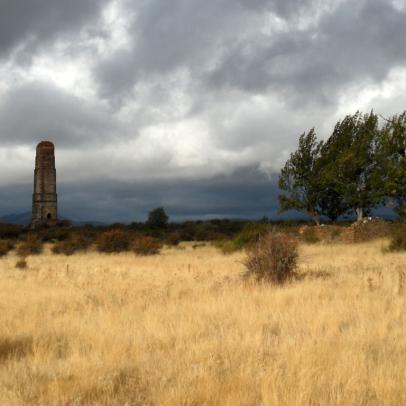Except for the numerous ventilation towers that dot the landscape around Hiendelaencina, travellers on the Way of El Cid would little suspect the hidden past of the town, which for decades filled it with activity and transformed the landscape and the memories of the inhabitants for ever. It all began in 1844, with the insistence of Pedro Esteban Górriz, a Navarran encouraged by the entrepreneurial spirit of the time, who founded and developed the first mining company that worked a vein of silver discovered in the Santa Cecilia Mine. New mines were rapidly opened up and Hiendelaencina was pierced underground by galleries while new buildings were raised for the transformation and smelting of the precious metal. The success of this ‘silver rush’ was so great that over 200 mine shafts were dug, with large investments of English capital, and the new villages built to house the arrivals reached over 10,000 inhabitants. The mining bonanza lasted with ups-and downs for more than six decades but with the start of the First World War, activity slowed down and disappeared.
The Town Corporation has marked out a footpath that links some of the more important mines, to reveal their walls, washing sites, furnaces and shaft entrances.
- Access by car: it is accessible along a good earth track suitable for all kinds of vehicles. The mines and buildings are distributed around the municipality. We recommend travellers visit the San Carlos Mine because of its easy access and proximity to the Way of El Cid. It is reached from the CM-1001 road by turning left a little before the Kilometre 58 and then continuing along a firm earth track for 700m.
- Access for people with limited mobility: there are no infrastructures adapted for people with limited mobility.
- Legal protection: it does not form part of any protected natural area.
- Seasonality: you can visit at any time of the year.
- Recommendations, what to see and do: most of the mines have not been prepared for visits, so you should be careful and avoid potentially dangerous places, such as the interior of buildings, mine shafts or the beds of ponds. We recommend you visit the ‘Land of Silver’ Interpretation Centre in Hiendelaencina. You should obtain information about opening days and times beforehand.
Rev.: PAB 05.05.23



